 On 13th October 2015 the management team of SABMiller (the second largest brewing business in the world) agreed in principle to a $108 billion takeover offer from AB-InBev (the largest brewing business in the world). When the announcement was made it was clear that the global nature of the businesses involved meant that the deal would have to be cleared by numerous competition authorities from all over the world. This blog focuses on the latest developments in the European Union.
On 13th October 2015 the management team of SABMiller (the second largest brewing business in the world) agreed in principle to a $108 billion takeover offer from AB-InBev (the largest brewing business in the world). When the announcement was made it was clear that the global nature of the businesses involved meant that the deal would have to be cleared by numerous competition authorities from all over the world. This blog focuses on the latest developments in the European Union.
The relevant legislation in Europe that addresses Mergers and Acquisitions (M&As) is the Merger Regulation that came into force on the 1st May 2004. This legislation gives the European Commission (EC) the power to investigate M&As that are said to have an ‘EU dimension’ as they exceed certain turnover thresholds.
Businesses involved in an M&A that meet the ‘EU dimension’ are obliged to pre-notify the EC and obtain clearance before going ahead with the deal. AB-InBev formally notified the European Authorities of its intention to acquire SABMiller on 30th March 2016.
Once official notification has been received, the EC launches a Phase 1 investigation which usually has to be completed in 25 working days. The investigation focuses on whether the M&A would:
“significantly impede effective competition, in the internal market or in a substantial part of it, in particular as a result of the creation or strengthening of a dominant market position” (Article 2(2) and (3))
This is often referred to as the ‘SIEC’ test. In addition to worries that an M&A may create or strengthen ‘single-firm dominance’, the ‘SIEC’ test is also used to test for ‘collective dominance’. Collective dominance is the possibility that the M&A might make either formal or tacit collusion more likely.
The European Competition has expressed concerns that the acquisition of SABMiller by AB-InBev might significantly impede effective competition in the premium lager market. Unconditional clearance of the deal would result in the same business owning many of the best-selling premium lager brands in Europe, including Stella Artois, Beck’s, Budweiser, Corona, Peroni and Grolsh.
As part of the Phase 1 investigation, the management of the businesses involved with the M&A can have ‘State of Play meetings’ with officials from the EC. At these meetings EC staff can raise any competition concerns they have with the deal and the businesses can respond by offering to take specific actions that they hope will address any issues. The most common action is a commitment to sell of some of the assets of the newly merged business.
Any commitments must be made no later than 20 days following the formal notification of the merger and they result in the time frame for the Phase 1 investigation being extended from 25 to 35 working days.
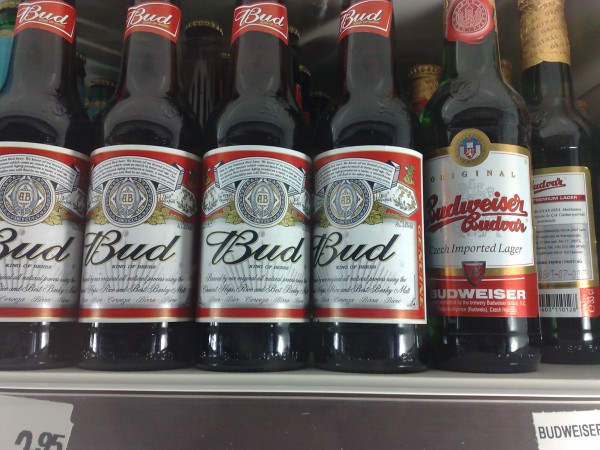
On the 8th April, AB-InBev made a commitment to the EC to sell the SABMiller brands Peroni, Grolsch and Meantime as a potential remedy for their competition concerns. A price of €2.55 billion for the deal was agreed with Asahi – the largest Japanese brewery. The sale of the brands is subject to the acquisition of SABMiller by AB-InBev being completed. Following this commitment, the EC extended the deadline for the Phase 1 investigation to May 24th.
It appears that at subsequent State of Play meetings EC officials expressed concerns that this commitment was not enough to address fully their worries over the impact of the acquisition on competition.
On April 27th (just inside the 20-working-day deadline) AB-InBev made an extended package of commitments to the European Union authorities to try to remedy their continued concerns. The commitments now include the sale of the SABMiller breweries in Eastern Europe (Poland, Hungary, Romania, the Czech Republic and Slovakia). Part of this sale would also include the Pilsner Urquell brand – a best-selling beer in the Czech Republic – and the Drecher brand – a best-selling beer in Hungary.
If the EC decides that the deal still raises concerns and could significantly impede effective competition in the single market, then the acquisition will be referred for a Phase 2 investigation. Phase 2 investigations are far more detailed than at Phase 1 and place far greater burdens on the parties involved. They also take much longer. The initial deadline for completion is 90 working days, but this can be extended to 125 working days in certain circumstances. Taking holidays into account they could last for 6 to 7 months before coming to a final decision.
This may help to explain why AB-InBev is willing to sell off nearly all of SABMiller’s European assets in the hope of obtaining clearance for a deal at the end of the Phase 1 investigation. The company aims to finalise the takeover in autumn of this year and is therefore very keen to avoid any regulatory delay created by a more detailed Phase 2 investigation.
Its willingness to sell off the European assets also confirms AB InBev’s main motive for its acquisition of SABMiller – to gain access to new and growing markets in Africa and Latin America.
It will be interesting to see the outcome of the Phase 1 investigation on May 24th.
Articles
AB InBev accepts Asahi offer for Peroni and Grolsch Independent (19/4/16)
Asahi laps up Peroni and Grolsch to smoothe AB InBev’s SABMiller deal The Telegraph (19/4/16)
Peroni and Grolsch sold as AB Inbev and SABMiller deal nears The Guardian (19/4/16)
AB InBev offers more SAB Europe assets to win EU deal approval Reuters (29/4/16)
Peroni and Grolsch brands sold by AB InBev to Asahi BBC News (19/4/16)
Questions
- What threshold criteria have to be met in order for a merger to be classed as having a European dimension?
- Discuss the different types of decision that can be made by the European Commission at the end of a Phase 1 investigation.
- Compare the notification system used by the European Commission with the one used by the UK competition authorities.
- Discuss some of the market conditions that would make either formal or tacit collusion more likely.
- Discuss some factors that might make it in the interests of society for an M&A to go ahead?
- To what extent does the evidence suggest that M&As have delivered the benefits predicted by the managers of the businesses involved?
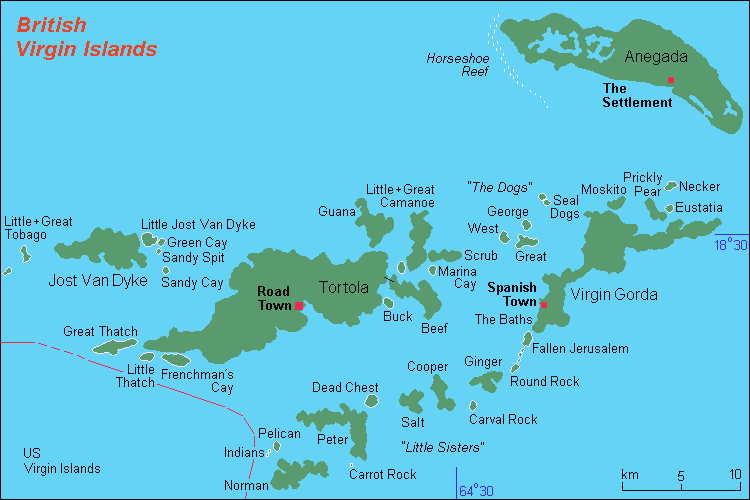 Tax avoidance has been in the news since the publication of the Panama papers, which show the use of offshore tax havens by rich individuals and companies, partly for tax avoidance, partly for money laundering and other criminal activities – some by corrupt politicians and their associates – and partly to take advantage of lower regulation of financial dealing.
Tax avoidance has been in the news since the publication of the Panama papers, which show the use of offshore tax havens by rich individuals and companies, partly for tax avoidance, partly for money laundering and other criminal activities – some by corrupt politicians and their associates – and partly to take advantage of lower regulation of financial dealing.
There are many tax havens around the world, including Switzerland, Hong Kong, British overseas territories (such as the British Virgin Islands, the Cayman Islands and Bermuda), Jersey, Singapore and certain US states  (such as Arizona, Delaware, Nevada and Wyoming).
(such as Arizona, Delaware, Nevada and Wyoming).
Here we focus on tax avoidance. This is the management of tax affairs by individuals or firms so as to avoid or minimise the payment of taxes. Tax avoidance is legal, unlike tax evasion, which is the practice of not declaring taxable income.
In a statement from the White House, directly after the publication of the Panama papers, President Obama spoke about the huge international scale of tax evasion and tax avoidance:
“A lot of it is legal, but that’s exactly the problem. It’s not that [people are] breaking the laws, it’s that the laws are so poorly designed that they allow people, if they’ve got enough lawyers and enough accountants, to wiggle out of responsibilities that ordinary citizens are having to abide by.
Here in the United States, there are loopholes that only wealthy individuals and powerful corporations have access to. They have access to offshore accounts, and they are gaming the system. Middle-class families are not in the same position to do this. In fact, a lot of these loopholes come at the expense of middle-class families, because that lost revenue has to be made up somewhere. Alternatively, it means that we’re not investing as much as we should in schools, in making college more affordable, in putting people back to work rebuilding our roads, our bridges, our infrastructure, creating more opportunities for our children.”

Tax avoidance, whether in tax havens, or through exploiting loopholes in the tax system may be legal. But is it fair?
Various principles of a tax system can be identified. These include:
|
|
| • |
Horizontal equity |
People in the same situation should be treated equally. For example, people earning the same level of income and with the same personal circumstances (e.g. number and type of dependants, size of mortgage, etc.) should pay the same level of income tax. |
| • |
Vertical equity |
Taxes should be ‘fairly’ apportioned between rich and poor. The rich should pay proportionately more taxes than the poor. |
| • |
Equity between recipients of government services |
Under the ‘benefit principle’, it is argued that those who receive the most benefits from government expenditure ought to pay the most in taxes. For example, it can be argued that roads should be paid for from fuel tax. |
| • |
Difficulty of evasion and possibly of avoidance |
If it is desirable to have a given tax, people should not be able to escape paying. |
| • |
Non-distortion |
Taxes alter market signals: taxes on goods and services alter market prices; taxes on income alter wages. They should not do this in an undesirable direction. |
| • |
Convenience to the taxpayer |
Taxes should be certain and clearly understood by taxpayers so that they can calculate their tax liabilities. The method of payment should be straightforward. |
| • |
Convenience to the government |
Tax rates should be simple to adjust and as cheap to collect as possible. |
| • |
Minimal disincentive effects |
Taxes may discourage people from working longer or harder, from saving, from investing or from taking initiative. It is desirable that these disincentives should be kept to a minimum. |
Of course, not all these requirements can be met at the same time. One of the most serious conflicts is between vertical equity and the need to keep disincentives to a minimum. The more steeply the rich are taxed, it is argued, the more serious are the disincentive effects on them likely to be (see the blog post from 2012, The 50p income tax rate and the Laffer curve). Another is between vertical equity and equity between recipients of services. Some of the people most in need of government support are the poorest and hence pay the least taxes.
The crucial question is what is regarded as ‘fair’. What is vertically equitable? According to the second article below, people’s preferred tax rates depend on how information is presented. If information is presented on how much tax is paid by the rich, people generally feel that the rich pay too much. If, however, information is presented on how much income people are left with after paying tax, people feel that the rich still have too much and ought to pay more tax.
 The majority of people in the UK feel that tax avoidance, although legal, is morally wrong. According to the results of an HMRC survey in 2015, “the majority (63%) of respondents felt that the use of tax avoidance schemes was widespread. However, the majority (61%) also responded that it was never acceptable to use a tax avoidance scheme. The most frequent reason given as to why it was unacceptable was that ‘it is unfair on others who pay their taxes’.”
The majority of people in the UK feel that tax avoidance, although legal, is morally wrong. According to the results of an HMRC survey in 2015, “the majority (63%) of respondents felt that the use of tax avoidance schemes was widespread. However, the majority (61%) also responded that it was never acceptable to use a tax avoidance scheme. The most frequent reason given as to why it was unacceptable was that ‘it is unfair on others who pay their taxes’.”
In making judgements about the fairness of tax, people generally have inaccurate knowledge about the distribution of income, believing that it is more equal than it really is, and about the progressiveness of the tax system, believing that it is more progressive than it really is. Despite this, they want post-tax income distribution to be more equal.
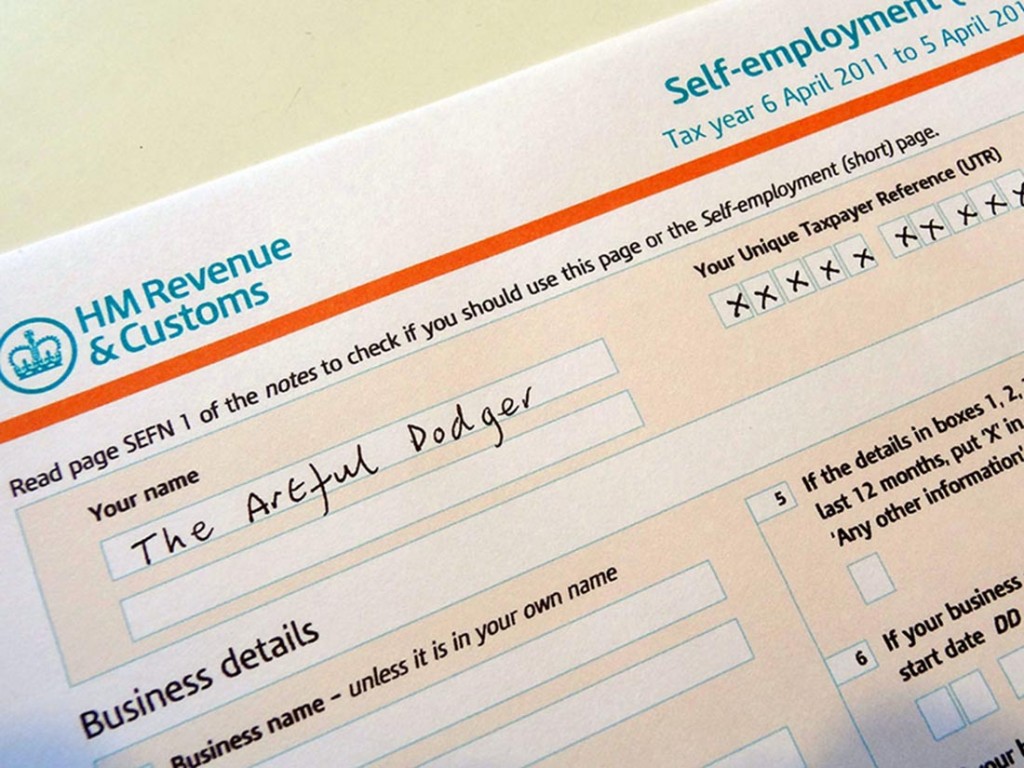 What is more, although people generally disapprove of tax avoidance, it is the system that allows the avoidance of taxes that they want changing. As long as it is possible to avoid taxes, such as giving gifts to children to avoid inheritance tax (as long as the gift is made more than seven years before the person’s death), most people see no reason why they should not do so themselves.
What is more, although people generally disapprove of tax avoidance, it is the system that allows the avoidance of taxes that they want changing. As long as it is possible to avoid taxes, such as giving gifts to children to avoid inheritance tax (as long as the gift is made more than seven years before the person’s death), most people see no reason why they should not do so themselves.
The following articles look at tax avoidance and people’s attitudes towards it. They are all drawn from The Conversation, “an independent source of news and views, sourced from the academic and research community and delivered direct to the public.”.
Articles
Explainer: what are ‘tax havens’? The Conversation, Tommaso Faccio (5/4/16)
When it comes to tax, how do we decide what’s fair? The Conversation, Stian Reimers (8/4/16)
Six things a tax haven expert learned from the Panama Papers The Conversation, Ronen Palan (6/4/16)
Documents
The Panama Papers The International Consortium of Investigative Journalists
Exploring public attitudes to tax avoidance in 2015: HM Revenue and Customs Research Report 401 HMRC, Preena Shah (February 2016)
2010 to 2015 government policy: tax evasion and avoidance HMRC/HM Treasury (8/5/15)
Questions
- Distinguish between tax avoidance and tax evasion.
- Give some examples of tax avoidance.
- Look through the various principles of a tax system and identify any conflicts.
- What problems are there in having a highly progressive tax system?
- What is a ‘shell company’? How can it be used to avoid and evade taxes?
- What are bearer shares and bonds? Why were they abolished in the UK in 2015?
- What legitimate reasons may there be for a company or individual using a tax haven?
- To what extent might increased transparency in tax affairs discourage individuals and companies from engaging in aggressive tax avoidance?
- What light does/can behavioural economics shed on people’s perceptions of fairness?
- How might the use of absolute amounts or percentages influence people’s thinking about the fairness of a tax system? What implications does this have for politicians in framing tax policy?
- In the principal–agent problem, where the principals are the tax authorities and the agents are taxpayers, why does asymmetric information arise and why is it a problem? How do the tax authorities seek to reduce this problem?
 When people think about healthcare in the UK they tend to associate it with the NHS. However, there is a £5 billion private healthcare market. Concerns have been expressed about the lack of effective competition in this sector and it has been investigated by the competition authorities over a 5-year period.
When people think about healthcare in the UK they tend to associate it with the NHS. However, there is a £5 billion private healthcare market. Concerns have been expressed about the lack of effective competition in this sector and it has been investigated by the competition authorities over a 5-year period.
Approximately 4 million people in the UK have a private medical insurance policy. The majority of these are paid for by employers, although some people pay directly. Four companies dominate the health insurance market (AXA PPP, Bupa, Pru Health and Aviva) with a combined market share of over 90%.
Health insurance companies purchase healthcare services for their policy holders from private hospitals. The majority of private hospitals in the UK are owned by the following businesses – BMI, HCA, Nuffield, Ramsey and Spire. Some concerns have been expressed about the lack of competition between private hospitals in some areas of the country.
After its initial analysis into the sector, the Office of Fair Trading (OFT) referred the case to the Competition Commission (CC) in April 2012 to carry out a full market investigation. This process was then taken over by the Competition and Markets Authority (CMA) when it replaced the OFT and CC. The final report was published on April 2nd 2014.
One specific region that was identified in this report as having a lack of effective competition was central London for patients with health insurance. In particular it was concluded that:
|
|
| • |
The market in central London was heavily concentrated and HCA had a dominant market position – its aggregated share of admissions across 16 specialities (e.g. Oncology, Cardiology, Neurology, Dermatology etc.) was 45% to 55%. |
| • |
There were significant barriers to entry including substantial sunk costs. A particular issue for a new entrant or existing business was the problem of securing suitable sites in central London to build new hospitals and in obtaining planning permission. It was pointed out in the report that the market structure in central London had changed very little in the previous 10 years despite a rapidly growing demand for private healthcare. |
| • |
HCA was charging insured patients higher prices for similar treatments than its leading rival – The London Clinic. HCA was also found to be making returns that were in excess of the cost of capital. |
One of the key recommendations of the report was that HCA should be forced to sell–off one or two of the hospitals that it owned in central London to increase the level of competition.
Unsurprisingly HCA was very unhappy with the decision and applied to the Competition Appeal Tribunal (CAT) for a review of the case. During this review, economists working for HCA found errors with the analysis carried out by the CMA into the pricing of health services for insured customers.

In January 2015 the CAT concluded that the findings and recommendations of the report on insured patients in central London should be overturned and the CMA should reconsider the case. In November 2015 the CMA announced that having reviewed the case it had come to a similar set of conclusions: i.e. there was a lack of effective competition and HCA should be forced to sell off two of its hospitals in London.
HCA still claimed that the pricing analysis was incorrect because it did not fully take into account that HCA treated patients with more complex conditions than TLC and that was why their prices were higher.
On March 22nd 2016 the CMA announced that it had reversed its ruling and HCA would no longer be expected to sell off any of its hospitals. The reason given for this change in recommendation was the appearance of new entrants into the market. For example, Cleveland Clinic a US-based private healthcare provider has purchased a long-term lease on a property in Belgravia, central London. It plans to convert the office space into a private hospital with 2015 beds.
A spokesperson for Bupa commented that:
“The CMA has confirmed again that there isn’t enough competition in central London, with HCA dominating the private hospital market and charging higher prices. We ask the CMA to act now to address this gap.”
It will be interesting to see the impact these new entrants have on the market in the future.
Articles
London develops as a global healthcare hub Financial Times Gill Plimmer (31/01/16)
Competition watchdog reverses ruling on private hospitals Financial Times Gill Plimmer, (22/03/16)
CMA’s private healthcare provisional decision on remedies CMA 22/03/16
Competition problems provisionally found in private healthcare CMA 10/11/15
CMA welcomes Court of Appeal verdict in private healthcare case CMA 21/05/15
Questions
- Define sunk costs using some real-world examples.
- Why might the existence of sunk costs create a barrier to entry?
- Draw a diagram to illustrate why a profit-maximising business with significant market power might charge higher prices than one in a very competitive environment.
- What is the cost of capital? Explain why returns that are greater than the cost of capital might be evidence that a firm is making excessive profits.
- Draw a diagram to illustrate the impact of new entrants in a market.
 There has been a link between Sainsbury’s and Argos, with Sainsbury’s offering Argos concessions in some stores. But now, we’re looking at a much more significant link, with Sainsbury’s offering £1.3 billion for control of Home Retail Group’s Argos.
There has been a link between Sainsbury’s and Argos, with Sainsbury’s offering Argos concessions in some stores. But now, we’re looking at a much more significant link, with Sainsbury’s offering £1.3 billion for control of Home Retail Group’s Argos.
Many have questioned the sense of this offer, wondering what Sainsbury’s will gain from purchasing Argos, but Sainsbury’s has indicated it will boost sales, give itself access to a more advanced delivery network and Argos customers. Argos has worked hard to update its image, moving towards a more technology based catalogue and promising same day delivery in a bid to compete with companies, such as Amazon.
 Online delivery is a costly business, with suggestions that retailers make losses on each delivery and hence pay customers to shop online. This move by Sainsbury’s may therefore be an investment in expanding its online delivery services and using the infrastructure that Argos already has. This will therefore help Sainsbury’s to invest in this sought after customer service, without having to invest millions into providing the infrastructure in the first place. This move may give Sainsbury’s a first mover advantage in the grocery sector, which may force other competitors to follow suit.
Online delivery is a costly business, with suggestions that retailers make losses on each delivery and hence pay customers to shop online. This move by Sainsbury’s may therefore be an investment in expanding its online delivery services and using the infrastructure that Argos already has. This will therefore help Sainsbury’s to invest in this sought after customer service, without having to invest millions into providing the infrastructure in the first place. This move may give Sainsbury’s a first mover advantage in the grocery sector, which may force other competitors to follow suit.
We could write for hours on the ins and outs of this potential deal and undoubtedly commentators will argue both for and against it. The following articles consider the good and bad sides and the future of grocery retailers in the UK.
Why does Sainsbury’s want to buy Argos? BBC News, Katie Hope (01/02/16)
Sainsbury’s agrees terms to buy Home Retail Group in £1.3bn deal The Guardian, Sean Farrell and Sarah Butler (02/02/16)
Sainsbury’s bets on Argos takeover for digital age Reuters, James Davey and Kate Holton (02/02/16)
Sainsbury’s returns with £1.3bn offer for Argos The Telegraph, Jon Yeomans and Ashley Armstrong (02/02/16)
Sainsbury’s could shut up to 200 Argos stores Sky News (12/01/16)
Sainsbury’s strikes deal to buy Home Retail Group Financial Times, Mark Vandevelde, Arash Massoudi and Josh Noble (02/02/16)
Questions
- What are the benefits to Sainsbury’s of taking over Argos?
- Why have many critics been surprised by this take-over?
- What is meant by a first mover advantage?
- Do you think that grocery retailers should diversify further or focus on their core business?
- Commentators suggest that delivery costs more to retailers than the price charged to consumers. Can you illustrate this using cost and revenue curves?
- Online delivery infrastructure is a big fixed cost for a firm. How will this change the shape of a firm’s cost curves and what impact will this have on profits following changes in market output?
- Do you think this take over will cause any concerns by competition authorities?
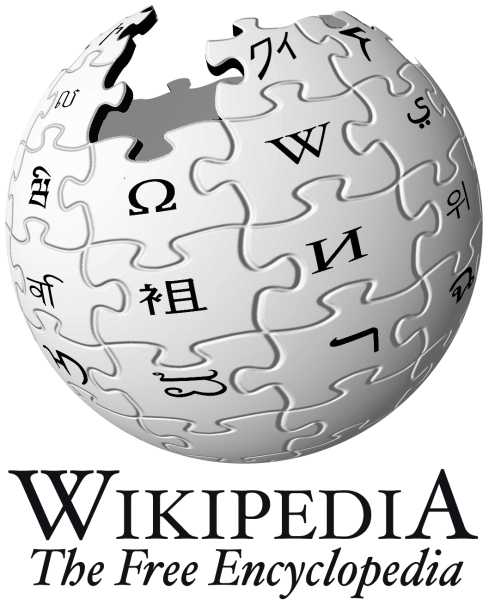 Wikipedia is a free on-line encyclopedia which is compiled and maintained by some of the people who use it regularly. It has been estimated that on any given day 15% of all internet users visit the website. Anyone can write new articles or edit existing material. The encyclopedia has over 5 million entries. So how is it financed?
Wikipedia is a free on-line encyclopedia which is compiled and maintained by some of the people who use it regularly. It has been estimated that on any given day 15% of all internet users visit the website. Anyone can write new articles or edit existing material. The encyclopedia has over 5 million entries. So how is it financed?
If you visit the Wikipedia website at the moment you will be greeted by the following message:
DEAR READERS, We’ll get right to it: This week we ask you to help Wikipedia. To protect our independence, we’ll never run ads. We’re sustained by donations averaging about £10. Only a tiny portion of our readers give. If everyone reading this right now gave £2, our fundraiser would be done within an hour. That’s right, the price of a cup of coffee is all we need. We’re non-profit with costs of a top website: servers, staff and programs. We believe everyone should have access to free knowledge, without restriction or limitation. If Wiki We believe everyone should have access to free knowledge, without restriction or limitation. If Wikipedia is useful to you, please take one minute to keep our work going another year. Thank you.pedia is useful to you, please take one minute to keep our work going another year. Thank you.
Wikipedia Foundation, the not-for-profit company that manages the Wikipedia website, has been running these donation drives for a number of years. The 2014/15 financial year was their most successful to date as 4 million donations were made by people from all over the world.  A total of $75 million was raised compared with $15 million in 2009/10. Although the average contribution was $15.20 in 2014/15, some people contributed over $250,000!
A total of $75 million was raised compared with $15 million in 2009/10. Although the average contribution was $15.20 in 2014/15, some people contributed over $250,000!
Many of you studying economics might find these figures surprising as Wikipedia would appear to have some of the characteristics associated with public goods. On the one hand, the material is perfectly non-rival. If someone decides to read an entry on Wikipedia it does not prevent other users from being able to read the same article. The article does not get used up or depleted in the act of being read. On the other hand, however, it is possible to exclude non-payers from gaining access to the material. For example in June 2010, the Times and Sunday Times introduced a subscription service for access to on-line versions of the newspapers. The New York Times recently announced that it had one million digital subscribers. However given its non-rivalrous nature, material could be shared between payers and non-payers. Groups of people could even get together and share one subscription.
The statement provided by Wikipedia clearly expresses the importance it attaches to free access. Given that it is non-rivalrous in consumption and free of charge to all users, does economic theory predict that people will (i) make voluntary monetary donations (ii) contribute and edit the on-line entries?
If all users are driven by narrowly self-interested preferences and act in a rational manner, then they will not pay and no donations will be made. People will choose to free ride as they can read exactly the same material whether they have paid for it or not.
Given the results of the fund-raising drive are so at odds with this prediction, it suggests that a significant number of Wikipedia users have either altruistic preferences and/or respond to social norms.
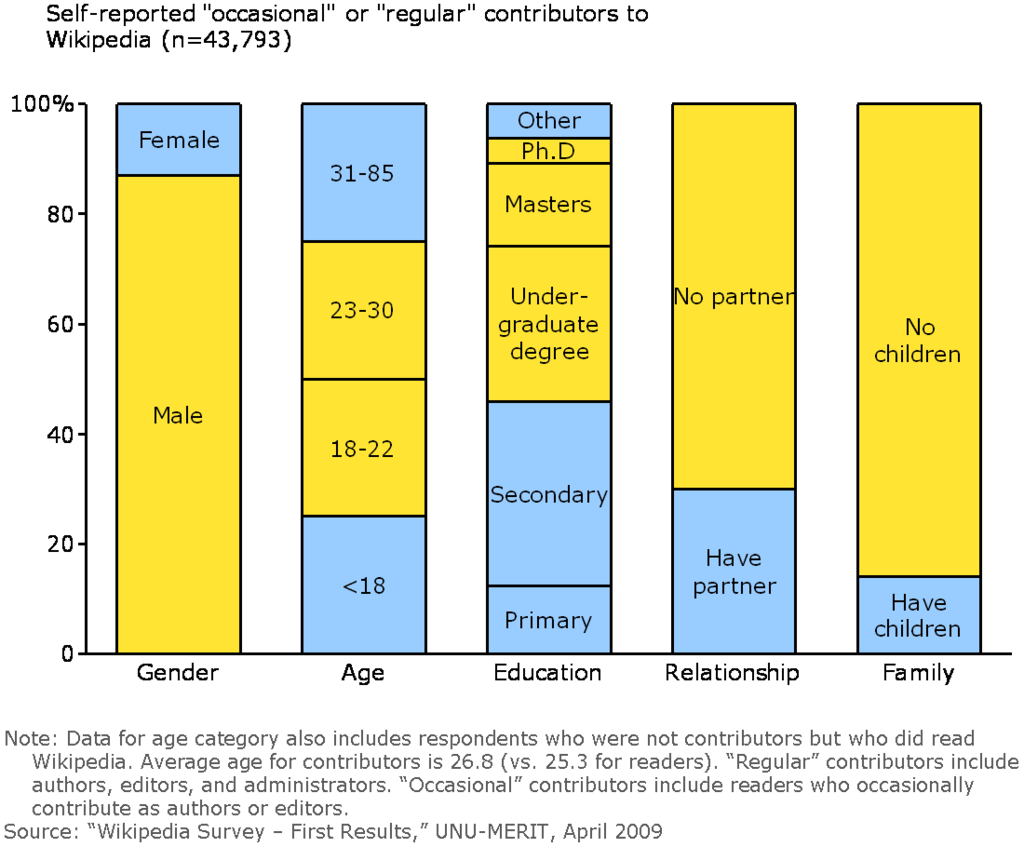 If a rational self-interested person receives no monetary payment for writing or editing an entry would they ever contribute to the website? Given the effort involved it would seem highly unlikely. However the Wikipedia website claims that over 125,000 people contribute regularly. They are referred to as ‘Wikipedians’.
If a rational self-interested person receives no monetary payment for writing or editing an entry would they ever contribute to the website? Given the effort involved it would seem highly unlikely. However the Wikipedia website claims that over 125,000 people contribute regularly. They are referred to as ‘Wikipedians’.
One possible explanation for this behaviour is that some individuals gain utility/pleasure from other people reading and finding their entries both useful and interesting. This utility might increase with the number of potential readers. Therefore keeping access free is a motivating factor for a number of contributors as it maximises the potential readership of their entries. However, the number of contributors fell by a one third between 2007 and 2014.
An interesting question is whether the quantity and quality of contributions would increase if Wikipedia implemented a subscription service which generated enough revenue to enable contributors to be paid but also significantly reduced the number of users.
An alternative way of generating revenue would be to allow advertisements on the website while keeping access free of charge. This option has been resisted so far.
Articles
The Wikipedia fundraising banner sad but untrue Wikipediocracy, The Masked Maggot and friends (11/12/2014)
Newsonomics:10 numbers on the New York times 1 million digital-subscriber milestone Nieman. Ken Doctor (6/8/2015)
The trouble with “Free Riding” Freedom to tinker, Timothy B. Lee (24/8/2008)
The future of Wikipedia: Wikipeaks? The Economist (1/3/2014)
Wikimedia publications
Fundraising report 2014-2015 Wikimedia foundation (26/10/2015)
Wikipedia community
Questions
- How do economists classify goods or services that have a low degree of rivalry but where it is relatively easy to exclude non-payers? Give some real world examples to illustrate your answer.
- How do economists classify goods and services that have a high degree of rivalry but where it is relatively difficult to exclude non-payers? Give some real world example to illustrate your answer.
- Explain why an economically rational individual might still make a donation towards the running of the Wikipedia website.
- Why do you think the number of contibutors has fallen?
- People often complain that Wikipedia entrees are badly written and contain numerous mistakes. To what extent do you think that paying contributors would help to overcome this problem?
- What are the possible advantages/disadvantages of financing Wikipedia by using advertising revenue?
 On 13th October 2015 the management team of SABMiller (the second largest brewing business in the world) agreed in principle to a $108 billion takeover offer from AB-InBev (the largest brewing business in the world). When the announcement was made it was clear that the global nature of the businesses involved meant that the deal would have to be cleared by numerous competition authorities from all over the world. This blog focuses on the latest developments in the European Union.
On 13th October 2015 the management team of SABMiller (the second largest brewing business in the world) agreed in principle to a $108 billion takeover offer from AB-InBev (the largest brewing business in the world). When the announcement was made it was clear that the global nature of the businesses involved meant that the deal would have to be cleared by numerous competition authorities from all over the world. This blog focuses on the latest developments in the European Union.










